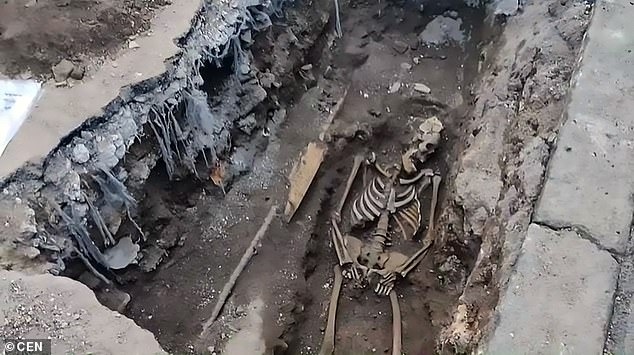A Journey to Valhalla—Inside the Viking Ship Graves of the North

Beneath the soil of Scandinavia, archaeologists have uncovered a burial tradition that speaks directly to the heart of Norse mythology and Viking identity: the ship grave. These wooden vessels, buried with warriors, chieftains, and nobles, were not mere tombs but symbolic vehicles—crafted to carry the dead on their final voyage toward the halls of Valhalla. Each discovery offers a window into the values, beliefs, and power structures of one of history’s most legendary cultures.

The ship burials are extraordinary in both scale and meaning. Inside the excavated vessels, archaeologists have found weapons of war—swords, axes, shields, and spears—symbols of strength and prestige that would accompany the warrior into the afterlife. Alongside them lay ornaments of gold, silver, and bronze, testifying to wealth and craftsmanship. Some graves even contained sacrificed animals, such as horses or dogs, meant to serve their master beyond death. Together, these offerings reflected the Viking worldview: death was not an ending, but a continuation of the journey, where social status and divine favor determined one’s place in eternity.
In Norse belief, the bravest warriors who fell in battle were chosen by the Valkyries, female figures who carried their souls to Valhalla, Odin’s hall of the slain. There, heroes would feast, fight, and prepare for Ragnarök—the final cosmic battle. The ship graves embody this vision. To the Vikings, the sea was more than geography; it was a spiritual force, a pathway between realms. To bury a warrior in a ship was to grant him the means to sail beyond the mortal world, into the eternal hall of gods.

Archaeological evidence reinforces this spiritual depth. The famous Oseberg ship burial in Norway, discovered in 1904, contained not only the remains of two women of high status but also tapestries, sledges, wagons, and intricately carved wooden animals—objects that blended ritual, daily life, and myth. Similarly, the Gokstad ship, unearthed in the late 19th century, held weapons, riding gear, and sacrificed animals, reflecting a warrior’s journey outfitted in full splendor. These finds remind us that Viking burials were as much about performance and belief as about mourning.
Modern studies also highlight how ship burials cemented power. By constructing monumental graves filled with symbols of authority, Viking leaders reinforced their legacy even in death. Communities witnessing these ceremonies would be reminded of the deceased’s might, lineage, and divine favor. Thus, the burials served both religious and political purposes—uniting faith, family, and society in one dramatic ritual.

Today, the ship graves continue to fascinate both scholars and the public. They capture the essence of the Viking world: seafaring adventurers, fearless warriors, and devout believers in a destiny beyond death. To stand before a reconstructed burial ship is to glimpse how the Norse saw life and afterlife not as separate realms, but as a continuous voyage—anchored by courage, honor, and faith.
The Journey to Valhalla remains one of history’s most profound expressions of the human desire for meaning after death. In wood, weapon, and bone, the Vikings carved their belief that death was not silence, but a summons to sail into eternity.
#VikingTomb #NorseLegacy #AncientBurial #Valhalla #ArchaeologyMystery











